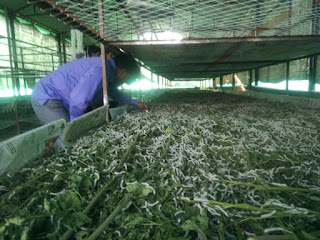VIA 70 App
(Vile Parle, Irla, Andheri MCGM ward no.
70)
A unique, first-time-in-the-country tool
for govt-citizen interface prepared by UPL Ltd and Shroff Family and social activist
Mayank Gandhi with the support of the elected representative of ward 70 of MCGM,
Mrs Sunita Mehta.
Preamble:
Decentralization:
The 73rd amendment (1991) for decentralization of power
in rural India has led to the creation of the Panchayati Bill, which has
substantially improved governance in rural India. But there is an equal, if not
more, need for decentralization in urban governance as per the 74th amendment.
Urban
disconnect: Urban citizens have shortage of knowledge and involvement
in the workings of local government.
Government
working: Gap in communication between the govt machinery and the
citizens reduces the performance of services and leads to discontent among
citizens.
Proposal:
A
model App has been created for one of the 227 municipal wards of MCGM to address
the above concerns. This is an honest and non-political attempt to create a
model for integrating urban citizens of India with the governance of their
locality. This can be done by sharing of necessary information with citizens,
involving them in day-to-day governance and empowering them with knowledge and data
in an easy-to-access and user-friendly manner. This will serve as a model,
which can then be replicated across various urban areas.
Details:
The
app has the following features
Ward budget – details of works
planned, work-in-progress and completed works VIA 70 ward. The app will allow
citizens to rate the civic works done and also make comments on its quality and
timelines. They can also suggest fresh work to be undertaken in the
ward.
Complaint mechanism – Citizens will be
empowered with information about the officers to whom civic complaints can be
made with the necessary timelines. Escalation of complaints in case of failure
to solve the complaints will be part of the App.
MCGM data – a complete data tree
with various departments of the MCGM.
Ward data – Complete data of
education institutes, health institutes and open spaces with Google map.
Important numbers can be accessed to
report complaints in various other forums like Police, Traffic Police,
Anti-corruption, elected representatives etc.
Volunteering opportunities in the
ward.
Know your rights – citizen charters
Neighborhood chats – there will be
multiple chat groups to encourage citizens to chat and discuss local civic
issues.
Present Report:
Launched on 18th
Nov 2018
|
Till
25-Nov-18
|
|
|
Total No of installs
|
302
|
|
Total No of Users
|
211
|
|
Open Complaint (work-in-progress)
|
46
|
|
Closed Complaint (addressed satisfactorily)
|
39
|
|
Total Complaint
|
85
|
|
Total No of suggestions
|
5
|








